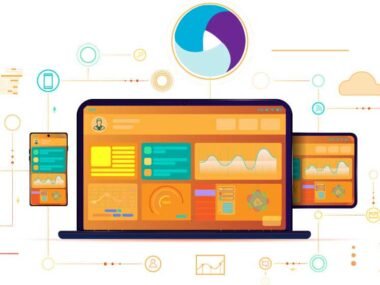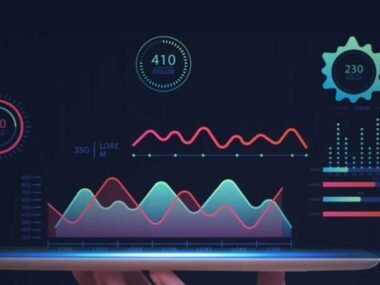Everything these days seems to live in the cloud. From storing photos to running entire businesses, cloud technology is the go-to solution. It’s fast, flexible, and makes remote access easier than ever. But when safety and security are involved, going all-in on the cloud isn’t always the best choice. That’s where central station monitoring still proves its value.
While cloud-based systems have changed how we work, central stations continue to deliver something the cloud can’t always promise—unshakable reliability, trained human response, and infrastructure built for nonstop operation. In this article, we’ll break down exactly why central station monitoring is still essential and how it fits into today’s tech-driven world.
Redundancy Still Matters More Than Ever
Cloud solutions are efficient, but they can also be vulnerable. A simple internet outage or a failed server update can throw an entire system offline. When you’re dealing with life safety or property protection, that kind of downtime isn’t acceptable.
This is where central stations stand out. These facilities are built with multiple layers of backup—from power and connectivity to hardware and staffing. Redundancy isn’t an afterthought—it’s a core part of the operation. Everything is designed to keep running no matter what happens, whether that’s a storm, a fire, or a widespread internet failure.
For anyone relying on an alarm monitoring service that level of reliability isn’t optional—it’s expected. A quick signal response can mean the difference between a minor event and a major loss. That’s why systems that depend solely on the cloud can’t always keep up in urgent situations.
Take Rapid Response Monitoring as an example. Their infrastructure includes multiple hardened command centers, real-time backups, and teams on call 24/7. These aren’t just add-ons. They’re part of what makes a professional alarm monitoring service dependable when it really counts.
Human Judgment Makes a Difference
Cloud tools are great at automating basic tasks. But when something goes wrong—really wrong—you want a person to make the call. A system can send alerts, but it can’t understand context, urgency, or emotion. That’s why real people are still a key part of professional monitoring.
Trained monitoring agents are able to assess situations in real time, follow special instructions, and decide what action to take next. Whether it’s dispatching emergency responders or contacting an account holder, the human element brings clarity during critical moments.
This kind of decision-making doesn’t come from an algorithm. It comes from experience and training. Central stations make sure there’s always someone ready to take action, not just forward an alert.
Cloud Isn’t a Replacement—It’s a Partner
It’s important to understand that central station monitoring and cloud technology aren’t enemies. In fact, they work better together. Many modern central stations now integrate with cloud tools to improve communication, flexibility, and convenience.
Mobile apps, web portals, and SMS alerts are all powered by the cloud. But behind the scenes, the monitoring still happens in a secured, purpose-built environment. This hybrid model allows users to enjoy the speed and convenience of cloud systems without giving up the dependability of a professionally monitored setup.
The cloud helps users stay connected. Central stations help them stay protected. Together, they offer the best of both worlds.
Supports Growth for Dealers and Tech Providers
Another reason central station monitoring still matters is its ability to scale. Security dealers and technology providers need a system that grows with them. Central stations are built for that. Whether a company manages 100 accounts or 10,000, the monitoring infrastructure can support the demand.
Many providers now offer hosted or hybrid central station services, allowing dealers to offer professional monitoring without managing their own facility. This is especially valuable for small to midsize companies that want to compete with larger players in the space.
With centralized monitoring in place, businesses can focus on growing their customer base, knowing they have a reliable backend that’s always on.
Compliance Requires More Than a Server
Security and life safety are regulated industries. There are standards to follow, inspections to pass, and certifications to maintain. Cloud-only platforms don’t always meet these requirements on their own.
Central stations are designed to stay in line with codes and regulations. They’re staffed by certified professionals. They’re reviewed, audited, and held to strict performance standards. For many businesses—especially those working with commercial fire systems or emergency response—the peace of mind that comes with a compliant setup is essential.
This isn’t just about avoiding fines. It’s about knowing that when something happens, your system will work the way it’s supposed to.
Smart Monitoring for a Smarter World
Technology has changed. So have the types of devices being monitored. It’s not just burglar alarms anymore. Today, central stations are handling a wide variety of services—GPS tracking, IoT device monitoring, video alarm verification, and more.
Security has expanded beyond doors and windows. Now, it includes connected thermostats, water sensors, smart locks, and even wearable panic devices. Central stations have adapted to monitor all of these, offering flexible support for the changing tech landscape.
The benefit? You don’t need a separate system for each type of device. Central stations act as a hub that ties everything together and ensures nothing gets missed.
Built for the Bad Days
There’s one thing that really sets central station monitoring apart—it’s designed for when things go wrong. The systems are built with failure in mind. That’s not a flaw—it’s a feature. Whether it’s a natural disaster, a hardware failure, or a cyberattack, central stations are made to keep working.
They have staff on standby. They have backup power. They have alternate data paths. Everything is ready for the worst-case scenario because that’s when they’re needed most.
Cloud services are improving, but they still depend on third-party networks, data centers, and infrastructure. Central stations are a more controlled environment, and when you’re protecting lives and property, that matters.
We live in a connected world, and the cloud plays a huge role in how we interact with technology. But when it comes to something as important as monitoring security and life safety systems, it’s not about replacing old systems. It’s about combining the best of what we have.
Central station monitoring remains a vital part of the security ecosystem. It adds a layer of dependability, professionalism, and human support that cloud-only setups often lack. As technology continues to evolve, central stations are evolving too—offering more integration, smarter tools, and better service.
In a cloud-first world, some things still need a strong foundation. Central station monitoring provides that foundation. It’s steady, proven, and still just as relevant as ever.










